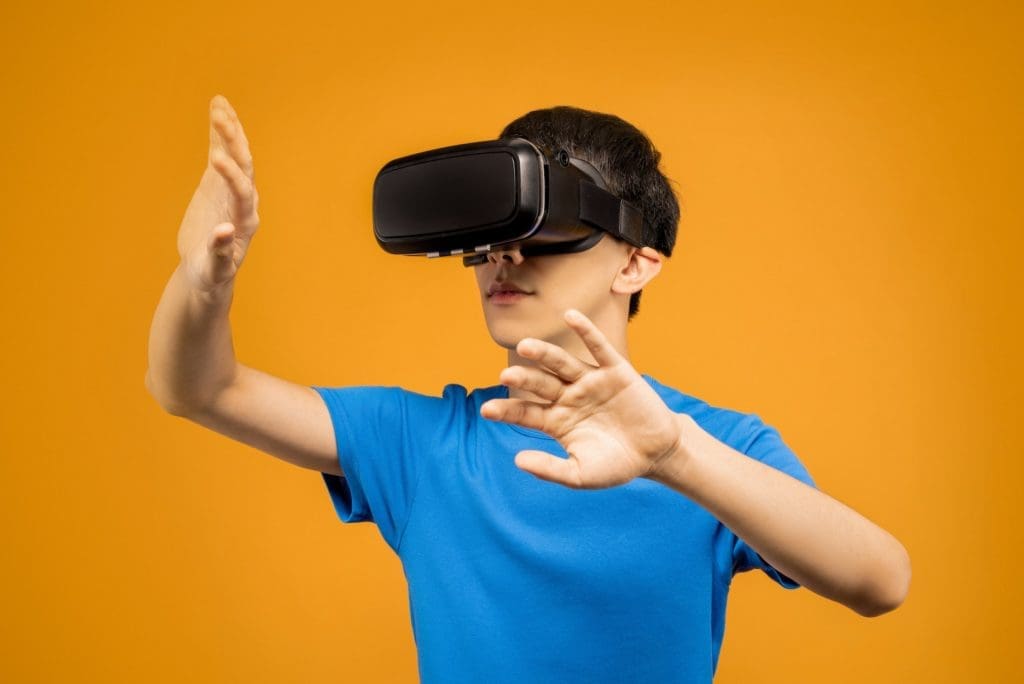Protecting tomorrow’s children in the AI digital revolution

Baroness Joanna Shields reflects on the 2022 Global Summit to Turn the Tide on Child Sexual Abuse Online and how the world is being changed by the metaverse, artificial intelligence (AI) and neurotechnology. She argues that tech companies, regulators and civil society must take action now and learn from the mistakes of the first digital revolution to build a better future for children before it’s too late.
In 2018, 1 in 3 internet users was a child under 18 and in 2019, UNICEF found that over 175,000 children went online for the first time every day.
More and more, children are growing up in two worlds: the physical and the virtual. But unlike our physical world, virtual spaces have grown without necessary regulation to ensure children’s safety. The online space is now a more dangerous place for them than ever before; the Internet Watch Foundation reported a 64% increase in URLs containing child sexual abuse imagery, or advertisements or links to this content, between 2020 and 2021 alone.
In 2014 I founded WeProtect (now WeProtect Global Alliance post-merger with the US and EU led Global Alliance) to combat child sexual exploitation online. On June 1st and 2nd, we held our 2022 Summit in Brussels, co-hosted by the European Commission.
We reflected on how we had fought this evolving threat in the last decade and renewed our commitments to a safer internet. As I told over 200 Alliance members from government, tech companies and civil societies at the Summit, it is crucial that we remain dedicated because of what technological advancements in the next ten years could bring.
A responsibility to use tech for good
Emerging technologies such as artificial intelligence (AI) and the metaverse carry a dual risk of not only replicating safety issues that plague our current tech landscape, but also helping new and deadlier threats to emerge. This is doomed to happen if these technologies are developed and rolled out without robust regulation, as the internet was.
Should this be the case, then the state of virtual reality (VR) today foreshadows what kind of virtual world we will create for children in the metaverse: worlds where, as the BBC found, adults simulate sex while children are present; worlds where, as Kabuni’s co-founder Nina Jane Patel recounts, it is possible to experience virtual gang-rape.
Don’t get me wrong, I am a firm believer in the power of technology to shape human lives for the better. This has been my focus throughout my 30-year career in tech. It is also our main purpose at BenevolentAI, the company I am CEO of, where we focus on using AI and machine learning to tackle one of humanity’s greatest challenges: discovering new and better ways to treat diseases.
Technology per se is neither good nor evil; it is up to us as individuals and as businesses to ensure that past and new technologies are used responsibly to create a better, fairer world for children and for all. On this note, while it is encouraging on the one hand to see many countries adopting national AI strategies, UNICEF has found that many of these make scant references to the rights of children.
Protecting children’s neurorights
Already, we are seeing disturbing trends in AI surveillance systems used to monitor children in American high schools. Meanwhile, in China, a primary school has trialled a head-mounted, AI-assisted device to monitor pupils’ brainwaves, ensuring they were paying attention in lessons. We must take steps now to ensure that children’s rights are protected in a future where this tech could become the norm.
The field of neurorights is still in its infancy, but we must engage as many people as possible in the conversation now. Money and power are rushing in to take a commanding lead in technology that can interact with, and perhaps even influence, neural activity; what could possibly go wrong?
We cannot afford to sleepwalk into this crisis. We need laws to prevent neurorights being abused by bad actors and, sad as it is to say, child predators.
Children’s rights must be comprehensively protected as AI and the metaverse become increasingly prominent in our lives. Any regulation must also be flexible enough to adapt to new threats as they emerge – which, as the internet has taught us, they will.
Critically, we must not let technology get ahead of us this time. We are still dealing with the consequences of not taking proper precautions with the internet.
But this does not mean we cannot prepare for the next technological sea change.
Together, we have the power to turn the tide
The previous ten years have proven that the WeProtect Global Alliance community is not just one of ideas – it’s about uniting all stakeholders in effective action. The 2022 Summit was an excellent reminder of the power of coming together. After being separated for three years by a pandemic, three years in which children’s experiences of online harms hit unprecedented levels, it was brilliant to see our members and friends as committed as ever to protecting children from harm online. It reminded us of the momentum our movement has achieved in creating a safer online world for young people.
It is brilliant, too, to see governments and international organisations engaging in this fight through robust regulation; for example, the European Commission with BIK+, its legislative proposal to prevent and combat child sexual abuse, and the UK government with the Online Safety Bill. My hope is that the stringency of these regulations can act as an example; not only for the rest of the world, but as a guide for realising the actions I have described.
We have an opportunity now to not repeat the mistakes that we made with technology before. For our children, and for all future children, let’s not waste a minute more.
Page last updated on 14th November 2024